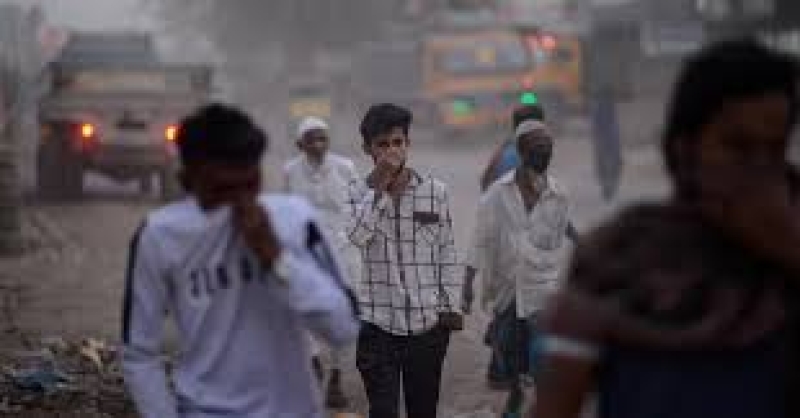- Chief Adviser Yunus lauds IFAD role in rural transformation |
- UNICEF sounds alarm over child crisis in eastern DR Congo |
- 308 Brick Kilns Shut, Tk13.78 Cr Fines; polythene seized |
- BNP submits list of 848 July-August martyrs to tribunal |
- Aynaghar sample of AL govt's brutality; CA says after visit |
Nearly Everyone in the World Breathes Polluted Air

While fresh air is universally appreciated, too often, it’s far from fresh. Nearly 99% of the global population breathes air that doesn’t meet the World Health Organization's (WHO) strict air quality standards, contributing to the premature deaths of 7 million people each year, according to the UN health agency.
Air pollution varies by location and season, but for residents of some of the world’s most polluted cities—many in Asia like New Delhi, Dhaka, Bangkok, and Jakarta—poor air quality feels inescapable. Tanushree Ganguly from the Energy Policy Institute in India warns that even on clear days, the air can still be harmful: "Blue skies can’t guarantee you clean air."
The most dangerous pollutants come from burning fuels: coal, natural gas, diesel, gasoline, and even agricultural waste. Among the most harmful are particulate matter (PM 2.5), tiny particles that penetrate deep into the lungs and are mostly produced by burning fuels. Larger particles, such as PM 10, arise from sources like agriculture, roads, and mining. Dangerous gases, including nitrogen dioxide and sulfur dioxide, are also byproducts of burning fuels.
Pollution levels fluctuate by region: Jakarta struggles with emissions from old motorbikes and industrial boilers; Thai and Indian cities are often choked with pollution from agricultural waste burning; Dhaka’s brick kilns contribute to air quality problems, while seasonal forest fires affect areas in Brazil and North America.
Health risks from air pollution are severe. Short-term exposure can exacerbate asthma and increase the risk of heart attacks and strokes, particularly in vulnerable groups. Long-term exposure leads to chronic heart and lung diseases, such as heart disease, COPD, and lung infections. Air pollution is the second leading cause of premature death worldwide.
The impact on children is especially concerning. Over 500 million children in East Asia and the Pacific breathe polluted air, with more than 100 children under five dying every day due to pollution. UNICEF warns that this toxic air stunts growth, damages lungs, and affects cognitive development.
So, how can you know if the air is safe? Over 6,000 cities across 117 countries now monitor air quality, with many weather apps providing real-time air quality data. However, understanding these numbers can be confusing, especially since different countries have different air quality standards. For example, India’s PM 2.5 limit is much higher than the WHO’s or Thailand’s standards, making comparisons challenging.
To protect yourself, it's important to limit exposure during bad air quality. This means staying indoors when possible or wearing a mask. However, for those who must work outside, like in many developing nations, avoiding pollution is not always an option. Additionally, indoor air pollution from activities like cooking or burning incense is another concern.
Air purifiers can help improve indoor air quality but have limitations, especially in large spaces or areas where they are unaffordable. In many developing countries, air purifiers remain out of reach for the majority of people affected by pollution.
The fight against air pollution requires not only personal precautions but also collective efforts to tackle the sources of pollution.

